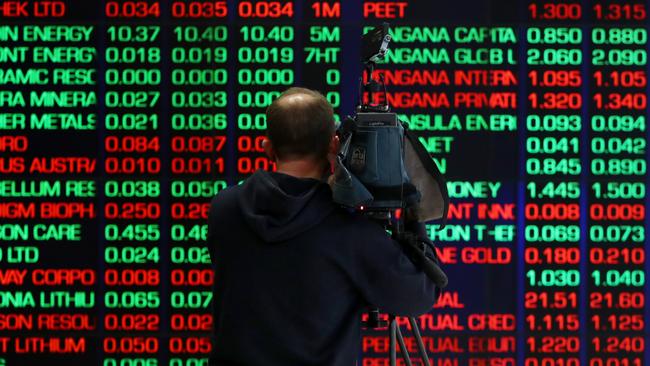Wild ride for your shares and superannuation: what comes next?
Shares are booming in Australia, the US and elsewhere, which is both tempting and scary for investors. Remember these rules.

Saver HQ
Don't miss out on the headlines from Saver HQ. Followed categories will be added to My News.
Broken records used to be something Aussies worried about with stereo player needles when changing over classic albums from The Beatles, Michael Jackson, Meat Loaf and Whitney Houston.
More recently, we’ve been cheering broken records as our Olympians and Paralympians smashed athletes from around the word.
Today, broken records are sparking both cheers and fears for investors as stock markets hit fresh highs almost daily.
Last week Aussie stocks hit a record closing high on five out of five days.
Investors are cheering the windfall gains, but there’s almost an element of fear that the good times won’t last.
The September-October period has historically been a time of stock market crashes, and many share analysts have voiced concerns that stocks appear priced for perfection.

However, some share analysts happy to point out that stock markets typically rise once central bank interest rate cuts begin – as the US Federal Reserve did last week. The US S&P 500 index has historically averaged great gains in the year following an initial Fed cut.
Your share portfolio could be in for a wild ride, and your super fund – which usually has a majority of your money in Aussie and US shares – will largely follow the lead of stock markets.
Whatever happens in the medium term, it’s worthwhile remembering a few key rules that have helped investors get richer for decades despite volatility.
1. PREPARE YOURSELF FOR A FALL
Behavioural economists say we feel the pain of financial losses much harder than we do for gains, so now is the time to think how you will react when an eventual market slump does arrive.
Will you look through the short-term volatility and focus on long-term gains? Will you panic and sell stuff in a knee-jerk reaction? Or will you see any sharp fall as a buying opportunity and pick up more shares at an effective discount?
During the global financial crisis of 2008 and 2009 I personally had a strategy to buy up big after Aussie shares slumped 10 per cent, then bigger after 20 per cent and even bigger after 30 per cent. Sadly they sunk 55 per cent and it took me more than a decade to get my money back.
Stocks may not fall for a long time, but it pays to be prepared for when it does.
2. DON’T DIVE ALL IN NOW
Fear of missing out is strong when asset prices rise, whether it’s property, shares or even cryptocurrency. But buying at the top of any market means you lose more than most when downturns inevitably arrive.
Of course, every record high in a market or an individual stock may just be a rung on the ladder to many more record highs, but a sensible strategy may be to buy stocks in bits and pieces.
This is called dollar-cost averaging and means making smaller share purchases regularly, smoothing out both gains and losses. Most super funds automatically do this by adding assets to your account each time contributions go in.
3. TAKE SOME PROFITS
A lot of super funds, and sophisticated investors, sell some of their biggest winners to pocket profits at times like these – however weird or difficult that may feel.
They set up automatic rebalancing, which returns an investment portfolio to its planned asset mix by selling the expensive stuff and buying more of the cheaper stuff (which hopefully bounces back).
It means you won’t get all the gains from broken records on stock markets, but when the market itself breaks down you will be better protected against the worst falls.
More Coverage
Originally published as Wild ride for your shares and superannuation: what comes next?





